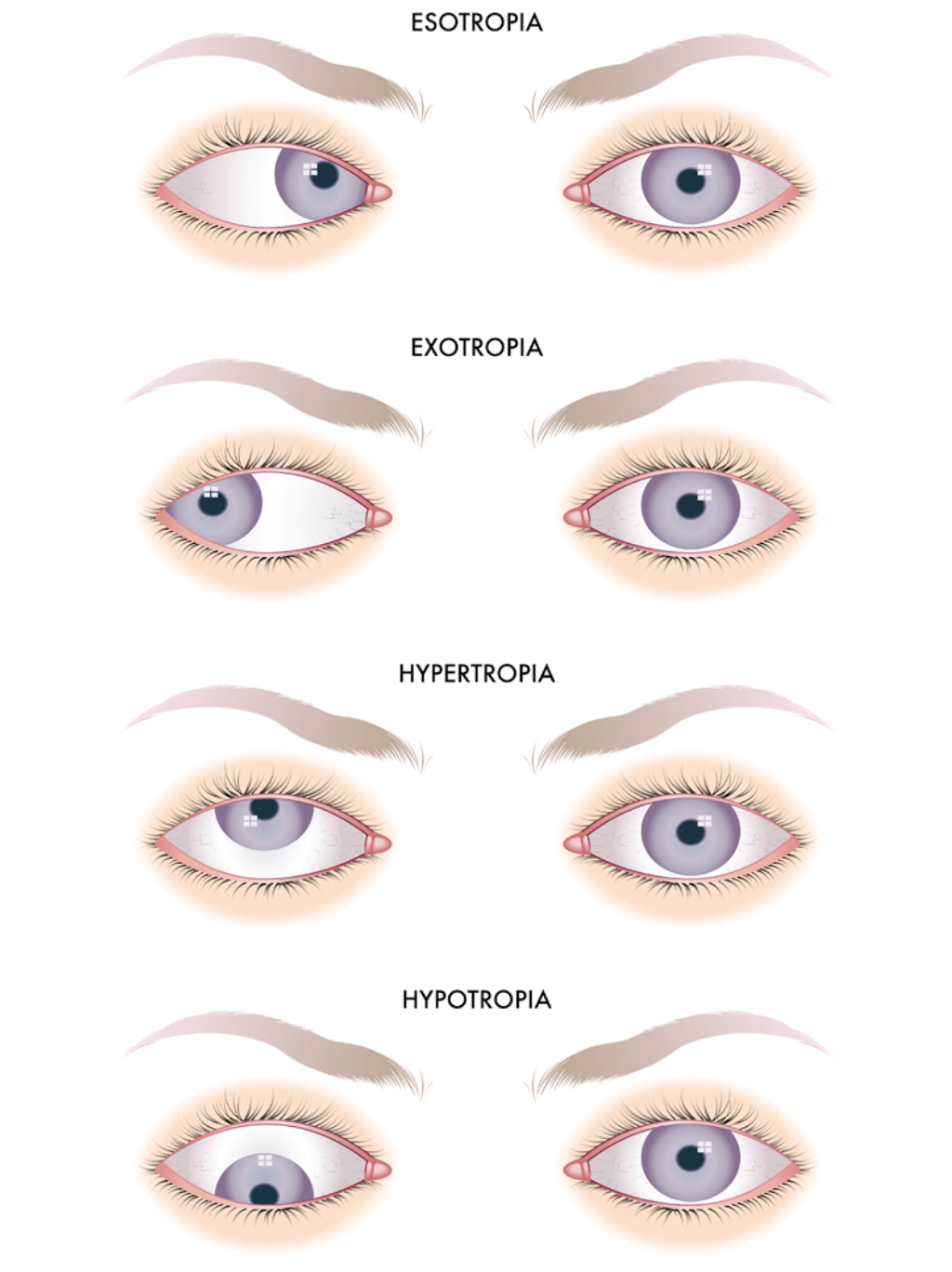strabismus

Strabismus is a condition in which the eyes are misaligned and pointed indifferent directions. Most adults that have strabismus have had it since childhood.
However, strabismus can occur in adults that have had no childhood history of misalignment. If there has been no prior history, a doctor may evaluate the patient for medical or neurological causes such as:
- Diabetes
- Thyroid disease
- Brain tumors
- Strokes
- High blood pressure
- Head trauma
- other neurological disorders
There are several types of strabismus:
- Esotropia is an eye misalignment where the eye turns inward towards the nose. It can affect one or both eyes and can alternate between the two eyes.
- Exotropia is a misalignment in which the eye turns outward, away from the nose.
- Hypertropia is an upward gaze or appearance of the eye while the other eye stays straight and fixates normally.
- Hypotropia is an downward gaze or appearance of the eye while the other eye stays straight and fixates normally
What are the symptoms of strabismus?
If the strabismus has been present since early childhood, the symptoms are usually minimal. If it develops later, the most common symptom is double vision.
Other symptoms may be eyestrain, headaches, discomfort while reading, or holding their head in abnormal positions to focus on an object.
How is strabismus treated?
There is a common misconception that strabismus in adults is difficult or impossible to treat. Actually, adults with strabismus have many different treatment options including:
- Eye exercises
- Special glasses with prisms
- Botox injections
- Eye surgery
